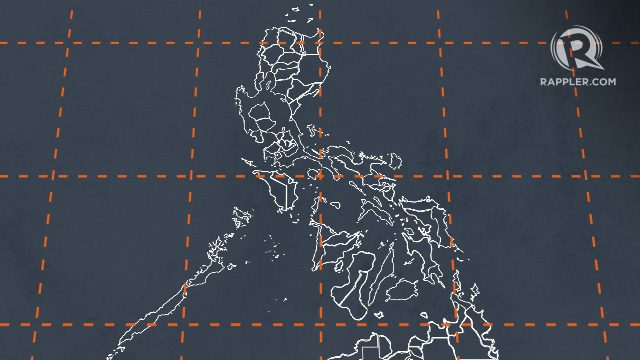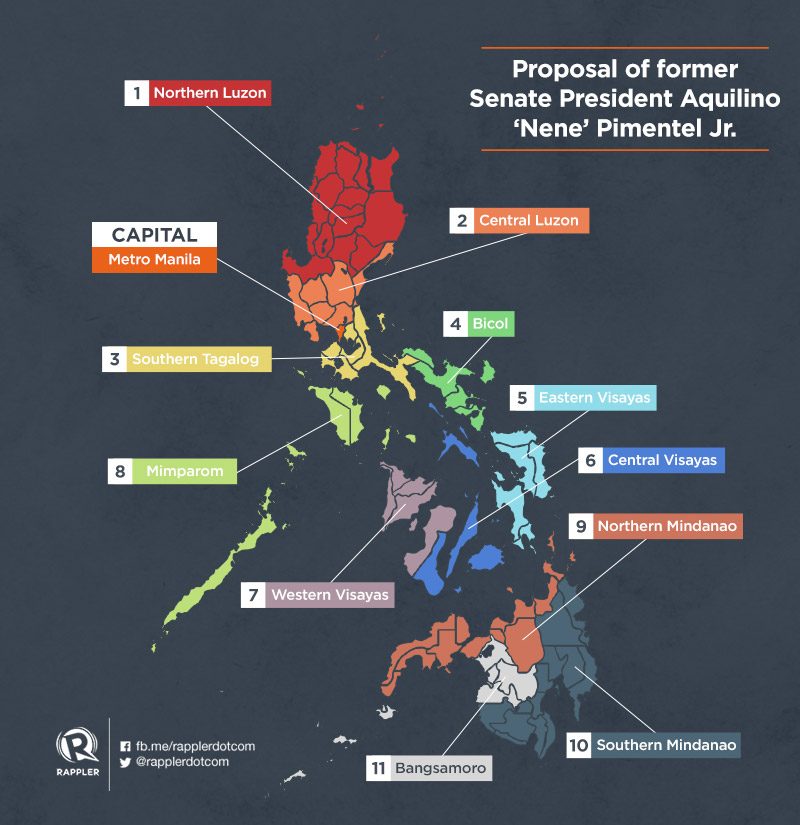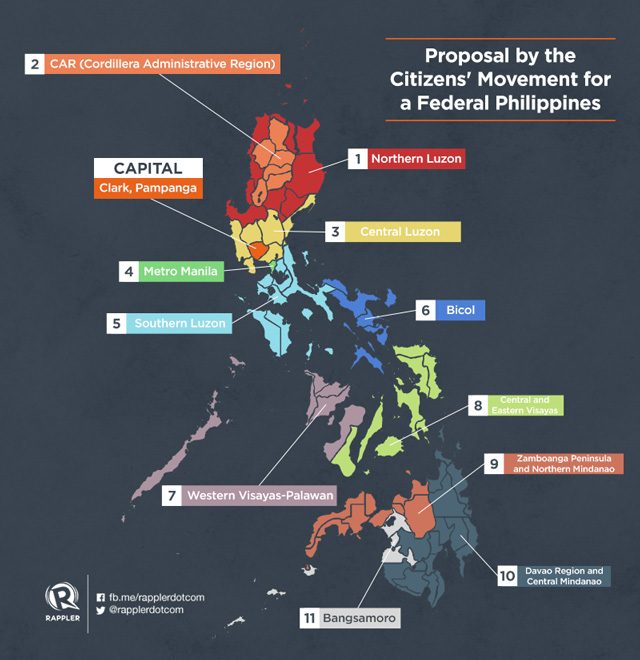SUMMARY
This is AI generated summarization, which may have errors. For context, always refer to the full article.

MANILA, Philippines – With no less than President Rodrigo Duterte a champion for federalism, a good number of politicians and advocates have revived their campaign for charter change in the past weeks.
At least 6 lawmakers in the 17th Congress have passed bills or resolutions calling for either a Constitutional Convention or a Constituent Assembly to change the 1987 Constitution. (READ: How do you want to elect your Con-Con delegates?)
Under federalism, sovereignty in the Philippines will be constitutionally shared between a central governing authority and constituent political units called states or regions. (READ: Will federalism address PH woes? Pros and cons of making the shift)
These autonomous states shall have responsibility over their own laws, finances, industries, public safety, education, healthcare, transportation, recreation, and culture.
The national government is left to take care of matters with nationwide bearing, like national security and foreign policy.
For Duterte and supporters of federalism, this form of government would remove the centralization of power and wealth at the so-called “imperial” Manila and empower the rest of the provinces. Some lawmakers, however, think federalism will still not address corruption and poverty.
The most basic issue in the debate is how many states the Philippines will be broken into under a federal system?
There are at least two proposals so far.
Proposal by ex-Senate President Aquilino Pimentel Jr

Former Senate President Aquilino “Nene” Pimentel Jr is proposing that the country be divided into 11 federal states, while keeping a presidential form of government and increasing the number of elected senators from 24 to 81.
The breakdown of federal states is as follows:
- Luzon: 4 states (Northern Luzon, Central Luzon, Southern Tagalog, Bicol)
- Visayas: 4 states (Eastern Visayas, Central Visayas, Western Visayas, and Minparom, covering Mindoro Oriental and Mindoro Occidental, Palawan and the Kalayaan Islands, Romblon, Marinduque)
- Mindanao: 3 states (Northern Mindanao, which may be subdivided into Northwestern and Northeastern Mindanao; Southern Mindanao, Bangsamoro)
Metro Manila will remain the capital of the federal Republic of the Philippines.
The president and the vice president will be elected as a tandem and not separately, similar to how they are elected under the current system.
A bicameral Congress also remains, but the senators will be elected from every state. Pimentel said this is also another way of power decentralization, as the newly elected senators from the May polls mostly came from Luzon.
Each of the 11 federal states will elect 6 senators and the same goes for Metro Manila. Nine senators will also be elected overseas.
Pimentel wants the federal executive department to hold offices in Metro Manila. (READ: Federalism proposal: Disperse seats of power throughout PH)
The legislature, meanwhile, will establish its office in Central Visayas. The Supreme Court and a proposed Constitutional Court, which will decide on constitutional issues, will hold their main offices in the federal state of Northern Mindanao.
Proposal by the Citizens’ Movement for a Federal Philippines

The Citizens’ Movement for a Federal Philippines (CMFP) is also proposing 11 states, but has a slightly different version of federalism in mind.
According to CMFP Advisory Board chairman and University of the Philippines professor emeritus Jose Abueva, the Philippines would benefit more from a federal-parliamentary form of government.
“With greatly improved governance in a federal parliamentary democracy, gradually we shall be better able to develop greater human and institutional capabilities for good governance: (1) to solve our problems, meet our challenges and achieve our goals as a nation; (2) to effect needed change and reforms faster, and (3) to sustain our development and modernization,” writes Abueva.
The CMFP proposes that the Philippines be broken down into the following 11 federal states:
- Northern Luzon
- Cordillera
- Central Luzon
- Metro Manila
- Southern Luzon
- Bicol
- Western Visayas-Palawan
- Central and Eastern Visayas
- Zamboanga Peninsula and Northern Mindanao
- Davao Region and Central Mindanao
- Bangsamoro
Unlike in Pimentel’s proposal, the CMFP wants the new capital to be located at the Clark Special Economic Zone in Pampanga. This federal capital will be called “New Manila.”
Each federal state will elect a representative to the “Batasang Estados (State Assembly),” whose members will be called as “diputados (assemblymen).” In Metro Manila, the mayors will constitute the State Assembly.
The new Parliament shall be bicameral, composed of the “Balay Sambayanan (House of the People)” and the “Balay Estados or Senado (House of the States).”
Members of the House of the People, called “parlamentaryos,” will be elected per parliamentary district.
The “senadores (senators)” from the House of States shall be elected by members of the State Assembly from among themselves.
The Parliament elects the leader of the majority party or coalition as the prime minister. He or she heads the Cabinet, and they will be responsible for the policies and program of government to be implemented.
Abueva said the president will be a “symbolic and ceremonial” head of state to be elected for a term of 5 years.
“The President shall symbolize the sovereignty of the people and the unity and solidarity of the nation with its ethnic, linguistic, religious, cultural, social and economic diversities,” Abueva said.
Judicial power shall be vested on the Supreme Court and the Court of Appeals, which will have a division in the capital of every state.
A Constitutional Tribunal will also be put up to decide on disputes involving the constitutionality of decisions by the federal government and the states. – Rappler.com
Add a comment
How does this make you feel?
There are no comments yet. Add your comment to start the conversation.